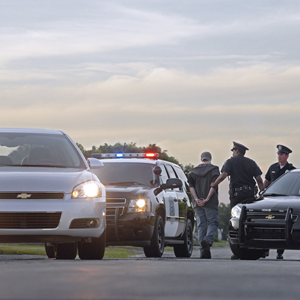 The end of the Supreme Court Term is fast approaching and holds great promise for spectators of the highest decisions of our courts. Naturally, the Court’s most difficult decisions take longer to decide and often end up being announced right before the Court takes its annual recess at the end of June. Last year, on June 26, 2015, the Court announced its ruling in the widely-heralded marriage equality case, Obergefell v. Hodges. This year should be no exception as last Monday, June 21, the Court already issued one groundbreaking decision in Utah v. Strieff.
The end of the Supreme Court Term is fast approaching and holds great promise for spectators of the highest decisions of our courts. Naturally, the Court’s most difficult decisions take longer to decide and often end up being announced right before the Court takes its annual recess at the end of June. Last year, on June 26, 2015, the Court announced its ruling in the widely-heralded marriage equality case, Obergefell v. Hodges. This year should be no exception as last Monday, June 21, the Court already issued one groundbreaking decision in Utah v. Strieff.
In Strieff, the Supreme Court ruled 5-3 in favor of Petitioner, State of Utah, holding that contraband obtained over the course of an illegal search did not violate the Fourth Amendment Rights of Respondent, Edward Strieff Jr., and as a result was not subject to suppression under the exclusionary rule. After an anonymous tipster reported “narcotics activity” at a residence, narcotics officer Fackrell observed what he suspected was drug dealing occurring at the South Salt Lake City home. Officer Fackrell detained Strieff after he left the home, requested his identification, and arrested Strieff after discovering an outstanding warrant for a traffic violation. While searching him after his arrest, Officer Fackrell discovered a baggie of methamphetamine and drug paraphernalia. The Court deemed the seized evidence sufficiently attenuated from Strieff’s illegal detainment, finding no unreasonable search and seizure.
In making its decision, the Court applied the attenuation test from Brown v. Illinois. Under Brown, tainted evidence is sufficiently attenuated, and therefore admissible, as long as: (1) the illegal stop is not “temporal[ly] proxim[ate]” to the search; (2) an intervening circumstance exists; and (3) the officer’s conduct is not “flagrant” and purposeful. The Court found the first factor favored suppression as the search was made immediately after Strieff’s illegal detainment, the second factor favored admission because the warrant was a satisfactory intervening circumstance, and the third factor also favored admission as Officer Fackrell’s conduct was “at most negligent” and not part of any widespread police misconduct.
In, Wong Sun v. United States, one of the most widely cited decisions regarding the exclusionary rule, the Court ruled in favor of Petitioner, holding that evidence obtained by narcotics agents should be excluded and suppressed as “fruit of the poisonous tree.” As Justice Sotomayor noted in her dissent in Strieff, Wong Sun turned on the fact that police officers exploited their initial illegal search to obtain the tainted evidence. Not only is it surprising that the majority’s opinion is absent of its own lodestar case, but the majority ignored the guiding principle set forth in both Wong Sun and Brown. Rather than employ a “totality of the circumstances” determination of possible exploitation as the Court did before, the Court interpreted Brown to espouse a determination based on cold arithmetic; the Brown factors favored the government 2-1, therefore the majority had to rule in its favor. The Court found in Wong Sun that suspicion strong enough to obtain an arrest warrant pursuant to “the deliberate, impartial judgment of a judicial officer” removed the taint from an illegal search. Officer Fackrell stated on the record that he observed Strieff coming out of the subject residence and decided “I’d like to ask somebody if I could find out what was going on [sic] the house.” This is hardly the strong suspicion that would convince a judge to issue an arrest warrant.
Strieff is especially noteworthy because of its plausible effect on public policy. How did Officer Fackrell’s conduct lack the flagrancy and purpose necessary to fail the third Brown factor and make the score 2-1 in Strieff’s favor? As far as Officer Fackrell knew, Strieff was only guilty of walking out of a home tagged with “narcotics activity” by an unsubstantiated source. The Court included the third Brown factor in its earlier decisions to prevent widespread fishing expeditions for misconduct. Justice Sotomayor reported that in Ferguson, Missouri, 16,000 people out of a population of 21,000 had outstanding arrest warrants. If an anonymous tipster reported that Ferguson was a hub for “narcotics activity,” could law enforcement illegally detain every resident of Ferguson knowing that 76% of the time a legal arrest and search could occur?
Lastly, it is interesting to note that Strieff was argued on February 22, 2016, nine days after the passing of Justice Antonin Scalia. More likely than not his presence would have made Strieff a 6-3 decision, as he heavily favored disarming the exclusionary rule. However, Justice Scalia was also a staunch defender of Fourth Amendment rights, so maybe, just maybe, he would have made this decision 5-4.
